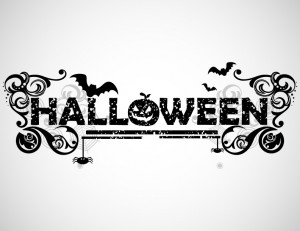Halloween is an unusual celebration. While it is not technically patriotic or historical, it is celebrated internationally. It weaves spirituality, death and religious beliefs into our present and historical imaginations.
Many believe that Halloween is a “pagan” or pre-European-Christian holiday with roots in Celtic traditions. Perhaps Halloween is a descendent of the Celtic Samhain festival? On the 1st of November, two significant events were observed: the Celtic New Year and the day when departed souls were believed to return to Earth. In 731 A.D., this date was officially designated as All Saints’ Day (also known as All Hallows Day). October 31st therefore became All Hallows Eve, in time shortened to “Halloween.”
Pumpkins and Maize
Some elements seem distinctively Native American in heritage. The pumpkin and maize – appearing in the form of candy corn and the corn shocks that decorate front porches even today.
Irish Traditions
People believe that trick-or-treating is linked to Irish Samhain traditions. It became popular about the time that the Irish began immigrating to the United States in large numbers. During Samhain; people opened their doors and provided food to the wandering dead. Eventually, individuals began dressing as wandering souls of the deceased and demanding sustenance.
Halloween – Trick or Treat
It’s possible that trick-or-treating may be a relatively recent phenomenon coinciding with population shifts from rural to urban environments. After all, it would be difficult to go door to door when the houses are miles apart. According to the Oxford English Dictionary, the phrase “trick-or-treating” first appeared in The Sun in Baltimore in 1950. But the practice may be considerably older.
Guy Fawkes
Folklore sees a connection to Guy Fawkes Day, November 5th, but it may also be related to early American harvest festivals. These festivals often included activities such as apple bobbing, hayrides, and various local variations of games aimed at predicting the identity of a future mate. Connections to death, disorder, endings and the separate and set-apart world of the spirits all are consistent elements in tales about Halloween’s origin.
Those that study the meanings of human culture have found that among the most intriguing symbols of Halloween are those listed below:
Symbols of Halloween fall into three major categories:
Death – graveyards, ghosts, skeletons and haunted houses.
Evil – witches, goblins and black cats.
Harvest – pumpkins, scarecrows, corn shocks and candy corn.
Tweet